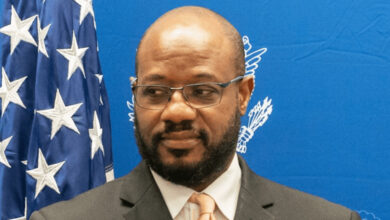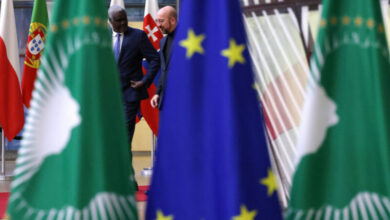Evidence can be inconvenient
Tomas Mega
In the hours and days following the shooting to death of eighteen year old Michael Brown, a shocking, conjured depiction of what happened emerged across America. Apparently Ferguson, Missouri police officer Darren Wilson, who shot Brown, woke up that morning, looked into his mirror and decided that day was the day he was going to gun down an innocent black teenager for no other reason than he could. According to the early reports of witnesses, including Brown’s friend Dorian Johnson, who was with Brown when he was killed, not only did Wilson shoot Brown dead while Brown had his hands held high up in the air in an apparent attempt to surrender, he also shot him in the back as Brown was supposedly fleeing from the officer.
Three days after the shooting, Mr. Johnson alleged in a local television interview that Wilson shot Brown in the back. Mr. Johnson made the same claim again on the Al Sharpton MSNBC TV program. Cornell Brooks, the President of the National Association for the Advancement of Coloured People (NAACP) was quoted by The Guardian saying Michael Brown was “a boy who did everything right, who never got into a fight, who stayed in school.” A picture was emerging of a police assassination. Days of rioting ensued in Ferguson as local people and many across America convinced themselves that an execution had occurred.
But as we now know, there were problems with Mr. Johnson’s eyewitness account as well as problems with the portrayal of Michael Brown as a 130kg choir boy. Moments before Mr. Brown was shot, he and Mr. Johnson robbed a store of a box of cigarillos, and according to video evidence, Mr. Brown strong-armed the clerk. Police were searching for the suspect and testimony given to the grand jury indicated that Mr. Brown had a box of cigarillos on him when the confrontation with Officer Wilson occurred. Medical examiners conducting multiple autopsies of Mr. Brown, including the medical examiner hired by Mr. Brown’s family, all said that Michael Brown was NOT shot in the back.
Do these inconsistencies justify the shooting of Michael Brown? Of course not; no more than they justify the depiction of Darren Wilson as a man who was hell bent on killing a black teenager that day.
What we know from the full release of the evidence presented to the Grand Jury is that eyewitness accounts both supported and contradicted Officer Wilson’s version of what happened. That’s not unusual. Eyewitness accounts are often contradictory. You learn that in your first year of law school. Far more important is the physical evidence. Paul Cassell, a criminal law professor at the University of Utah, has poured over that evidence and wrote the following in the Washington Post: “The physical evidence is important because, unlike eyewitness testimony, it doesn’t lie and cannot be accused of bias (such as racism). As the cliché goes, the physical evidence is what it is.”
Mr. Cassell’s conclusion? That the powder burns, DNA, bullet trajectory, blood evidence and shell casings all support Officer Wilson’s account of what actually happened.
Evidence can often be inconvenient to our biases. This seems to be particularly true when it comes to racial biases in America. Prior to the Michael Brown shooting, perhaps the best example of this was the 1994 O.J. Simpson double murder trial. One of Simpson’s attorneys, Johnnie Cochran, pleaded to the jury regarding the bloody glove that the prosecution said Simpson wore while committing the murders. When the prosecution asked Simpson to try the glove on, it didn’t fit. “If it doesn’t fit, you must acquit,” said Cochran. The jury did, and O.J. Simpson became a free man, much to the consternation of many Americans who were, and still are, convinced that Simpson was the murderer.
What we “think” may have happened in these cases isn’t important. Whether we like or dislike the grand jury process or the trial jury process because it does or doesn’t suit our particular prejudice, racial or otherwise, is irrelevant. Guilt and innocence are decided by preponderance of evidence; including eyewitness, physical and forensic. In our system of justice, ordinary citizens are asked to make an arduous decision; in the case of a grand jury, a decision to indict or not indict for an alleged crime; and in the case of a trial jury, guilt or innocence of the accused.
The problem in our system arises when those ordinary citizens who are charged with those crucial decisions ignore evidence to satisfy a particular bias. To many Americans, black and white, that is what happened to Mr. Eric Garner, a black petty criminal in New York City, who died after he was brought to the ground by an officer who had him in a choke hold. “I can’t breathe, I can’t breathe” Garner is heard saying on video, as the police continue to forcibly restrain him. Despite the medical examiner ruling his death as a homicide, a grand jury decided not to indict the police officer involved. Why? Because grand jury’s tend not to indict police officers in America.
Perhaps what happened in Ferguson and New York City will spark an examination of a system of justice which appears to have defaulted into a system for citizens and a system for police. When any system of justice materializes into one that vastly favours any segment of society over another, something is terribly wrong.
Because all of us have and develop prejudices over time, evidence will always be inconvenient to our biases. But Lady Justice is blindfolded and the scales she holds are balanced. Whether the rest of us like it or not, for those charged with the grave responsibility of implementing justice fairly, the inconvenience of evidence is not an option.








